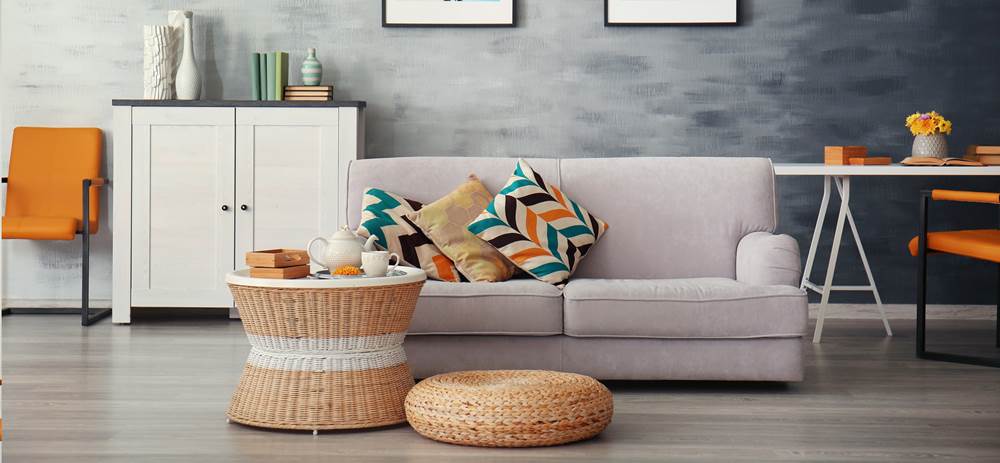
Psychology of Buying a Home
Most of us, when starting the house viewing process, go in armed with facts and figures that will help us find the perfect home, such as price, size and location. However, although logic certainly plays a part, you might be surprised at how influential our emotions are in in the buying process.
We have a look at how your subconscious mind can play a significant role in one of life’s most conscious decisions.
Revealing our true colours
It turns out that even something as seemingly arbitrary as colour can seep its way into the cogs of our brain in our decision-making process.
While it would be pretty impossible to predict the palette preferences of your potential viewers, there are certain colours that are more likely to evoke a subconsciously positive response. For example, several studies have reached the conclusion that light blue is perceived as a calming and comforting colour, while red is commonly associated with confidence and is likely to pull the eye towards it.
Painting a room in a soft sky or sea blue might not be feasible depending on your budget, but be mindful of its potential calming influence on viewers and try to incorporate it into your decorations. Red as a dominant colour might be a bit overpowering, giving off an intimidating vibe, so perhaps reserve this colour for drawing the eye to a particularly impressive feature – such as a crimson vase atop a decorative fireplace. If you are looking for a bit more information on how to use colour psychology to your advantage, you can read up here.
Love At First Sight?
You know what they say about lasting first impressions? Turns out it’s actually rather true.
The primacy effect is a built-in bias that allows us to recall initial information with more clarity than that which follows it. This means that if your viewers are greeted by a bright front door and an attractive front garden, then this memory is more likely to trump that of a cracked kitchen tile when they are considering making an offer on the property.
However, this works both ways – and doesn’t just apply to what we see. For example, if the bins outside your home are giving off an unpleasant smell, then this scent is likely to linger in the viewer’s mind, even if the kitchen smells delightfully of freshly baked cookie dough.
Although rationally these things would be easy to fix if the viewer were to eventually own the home themselves, they are likely unaware of even being influenced by them. So, it’s best to ensure that your first impression packs a favourable punch - to both the conscious and subconscious!
Perhaps it’s a thing of the past
While it may not be something that you can exercise much control over, it’s still interesting to note that the layout of your home could subconsciously be appealing to your viewer’s past memories.
That feeling you get when you step over a threshold and feel instantly at home could be down to a lot more than intuition, in fact the property could feel like home merely because it shares features with a previous abode. In some cases, it could be very obvious that you feel an attachment to a place because the big staircase reminds you of your grandmother’s home, growing up, or it could be a subtle warm wave to happy times – such as a coffee table being positioned in the middle of the family room.
These internal associations can have both a positive and negative effect on viewers depending on whether the recollections that they link with them are happy or sad – either which way, there’s very little you, as a seller, can do to manoeuvre this phenomenon. However, perhaps it may be useful to bear it in mind as a possibility if a potential buyer seems put off your house for no discernible reason – it could simply be the emotive side of their brain making the decision for them!
The bigger picture
The property may be what they are physically buying, but it’s not always necessarily what the viewer is buying into. People tend to look at properties in certain areas because of the lifestyle they wish to lead, and are looking for a home that would fit in with that.
It's not uncommon for a viewer to develop positive preconceptions about a house before they have seen it, based purely on the fact that they want access to the lifestyle that they have associated with living in that area. This often leads to them making unconscious compromises, such as forgoing the en-suite that they have in their current bedroom in favour of a cottage on the waterfront.
Ultimately the rational side of the brain will play a part, and if the property is unsuitable for a particular person they are unlikely to put in a bid for it – no matter how much they love the thought of meandering down to the village at the weekend. However, by doing a bit of research into the area, perhaps considering what drew you to it in the first place, you can perhaps take an educated guess at how to bolster any positive expectations of your property that viewers may have.
For example, if a nearby beach is known for its water sports then leave a hint of that in your decoration – whether it’s leaving your surfboard on display in the garage or simply a photo on the wall of fun times in the water. This will help confirm that living in your home is the best way to take advantage of the lifestyle that’s on offer.

